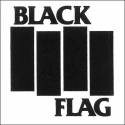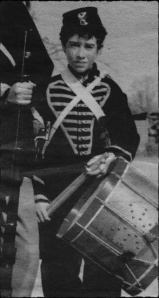I think it was in Texas in the spring of ’06 when I bought the Arctic Monkeys CD Whatever People Say I Am, That’s What I’m Not; which went on to become the fastest selling debut album in British music history. I also picked up an Anti-Flag CD, Coldplay’s live album, and I’m Wide Awake, It’s Morning by Bright Eyes that day. I’ll never forget the smirk on the cashier’s face when he said I had an “interesting” taste in music. I had actually been introduced to Arctic Monkeys a year prior when a friend gave me a mix CD with one of their songs on it. Remember those? I found some of my favorite music through mixes.

After reading this article on The Guardian, I was very impressed to learn that in the UK, the Arctic Monkeys’ latest album, AM, was “the biggest selling vinyl LP of 2014.” The article also mentioned that vinyl has become “an attractive format for object fetishists and committed fans.” Now object fetishists and committed fans are two completely different types of people, so I had to find out: who is buying vinyl records?
I don’t have a Facebook account and as you get older your friends generally start to move on with their lives, so I posed a question to an online vinyl record forum: “Why Do You Buy Vinyl Records?” I didn’t expect to get much of a response, but the one that I did get was not only qualitative, but quantitative. Perfect strangers opened up to me over the internet detailing exactly how they listen to records, their childhood, what their hobbies are, and what kinds of music they listen to.
You can probably guess who the majority of vinyl consumers are: 20-something men in major cities with enough disposable income to afford the average $20 record. If you guessed this, then you guessed correctly. What astounded me however were the vast lifestyle differences and reasons for purchasing that varied by respondent. Approximately 76% of my audience were males between the ages of 25 and 39, with all other respondents being female (obviously) and/or between the ages of 18 and 24.
Sound was first recorded in 1857, which was over 150 years ago. The tail end of vinyl record sales slowed in 1996 with just over one million units sold, so what does that say about the staying power of vinyl? The majority of my respondents were still teenagers when vinyl “died out,” yet somehow still find themselves drawn toward this mysteriously popular format.

So what caused this shift back to traditionalism? Was it Napster, KaZaA, or SoulSeek? How about iTunes, Zunes, or CD players? Or maybe it was the final nail in the coffin: YouTube, Spotify, or Pandora. I can’t say for sure, but after reading some of the responses to my question, I found that the main reason for this shift was the physical and emotional connection that the listeners felt to the music on the record. If we look at the timeline mentioned above, from vinyl to CD, and Napster to Spotify, let’s think about how this affected the artist. In 1996, bands were selling vinyl and CDs for upwards of $20, but today they only get paid mere pennies for however many hundreds of times their songs are streamed on Spotify.
The second highest response to my question was to support the artist. Bands clearly aren’t making any money from streaming, and they definitely don’t have major labels backing them any more, so where is their revenue coming from? For some lucky artists, it’s coming from their vinyl record sales. 21% of my respondents purchased just to support the artist. Two of the other major responses to my question were that listeners are buying vinyl for the higher audio quality and physical packaging.

Some of the more interesting lifestyle statistics I gathered from my audience were geographical location and annual household income. Most lived on the east coast of the United States in major cities, some were unemployed, and others made almost $200,000 per annum. Music has always been something that brings people together, and often transcends cultural and socio-economic barriers. It was really exciting to see so many people from different backgrounds come together just to talk about their love for music. Many of them talked about the feeling they get of nostalgia or warmth once they touch the needle to the record, or how much closer they feel to the artists that they love.
The artists have noticed this cultural shift too, and have started to give back to their fans. Record Store Day is usually the third Saturday of April, an international holy day for musicians, fans, and record store owners alike. Many bands release special records and CDs and even perform concerts at independent record stores all around the world. It has become a unique and important observance for die-hard music fans allowing them the chance to collect rare memoribilia, meet the artists they love, and provide a revenue boom for small businesses and independent musicians.
Though music may be seen as a commodity to many, to others it is life. The anticipation running through their veins as they tear off the shrink wrap, pull out the liner notes, and delicately place the needle on the track. Turning the lights down low, the bass and treble up, and simply enjoying being nowhere with only your favorite song as company. I’d like to say that the recent uptick in sales of vinyl records is not a trend, because trends don’t last for 150 years. Trends come and go as technologies and cultures change, but one thing that will always remain the same is the connection that we feel to the music.





